MILFORD – With Holy Week now underway, Stations of the Cross are not only being prayed, but reenacted, around the Diocese of Scranton.
Numerous parishes and Diocesan schools have been holding ‘Living Stations of the Cross’ presentations recently, which are opportunities for students to read and act out the Stations in a prayerful and moving way that often incorporates music.
A moving reenactment of Jesus’ Via Dolorosa, or final journey to Calvary, was presented by faith formation students at Saint Patrick Parish in Milford on Friday, March 22, 2024.
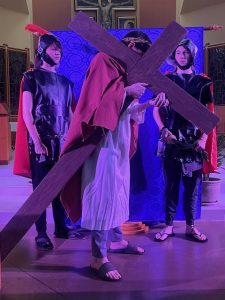
“We practiced for three weeks, for about an hour each time,” eighth grader Patrick Fleming said.
Fleming portrayed Jesus this year and found the experience to be a powerful opportunity to reflect on His journey.
“I really understand it fully now,” he said.
Angelica Barcia served as narrator for the second year in a row.
She appreciates participating in the Living Stations because it gives everyone a full understanding of the many things that Jesus had to endure before His death.
“It’s so important for people to realize that He didn’t just die on the cross for our sins,” Barcia said. “He was human and He had all the mental capacities that we do.”
After participating in the presentation for several years now, Barcia says the Stations of the Cross now hit “closer to home.”
“It’s not just a story,” she said. “This helps me visualize and understand exactly what lengths Jesus went through when He died on the cross for us.”
She is often struck by the reactions from the audience.
“I think people understand it better, and emotionally, they have a deeper connection with it,” Barcia added. “You definitely see it in their facial expressions.”
Connor Giblin, a high school sophomore, participated in the program for the first time this year. The presentation also impacted him.
“Going through it, it really makes me appreciate everything He (Jesus) did for us on a whole new level,” he said.
Giblin will receive the Sacrament of Confirmation at the Easter Vigil Mass this year. Participating in the Living Stations allowed him to reflect on Jesus’ journey in preparation of that special day.
“When I sat down and listened to each Station individually and I realized what He had to go through, it was a shock to my core, it sent a chill down my spine,” he said.
Giblin portrayed a soldier, and while not the biggest part, it was certainly meaningful.
“You feel like you’re in the soldier’s position and you realize what they had to put Jesus through. Morally, it feels wrong to me, being in that position, but that really connects me to the scene even more,” he explained.
Other students participating in the Living Stations included: Kaitlin Murphy as Mary, Cristian Caciralli as Simon, Clare Barcia as Veronica, Slawomir Kratochwill as a soldier, and Emersyn Delrio, Selena Dolan, Angelina Giovane and Adele Kahmar as holy women.
The Living Stations reenactment at Saint Patrick Parish was directed by Laurie Barcia of Milford, featured costumes by Michelle Baron, also of Milford, music by the parish’s music ministry, and professional lighting by Micah Sweeney and Kevin Striker. Special prayers were led by Father Joseph Manarchuck, pastor.
The presentation was followed by a “Glow in the Dark” egg hunt in Saint Patrick’s Hall, with pizza provided by the Knights of Columbus.

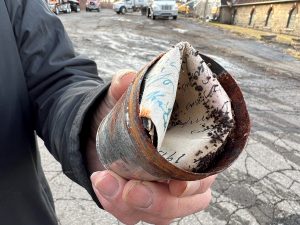
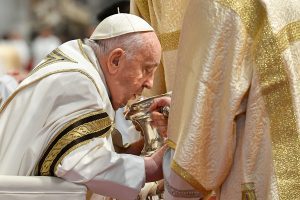
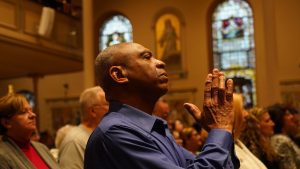
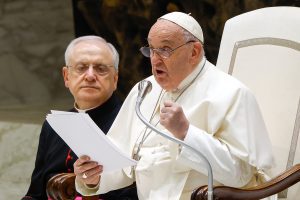
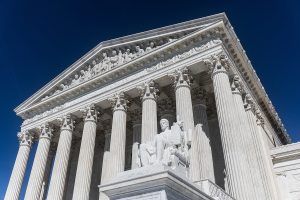
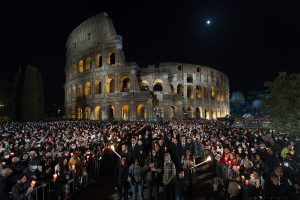
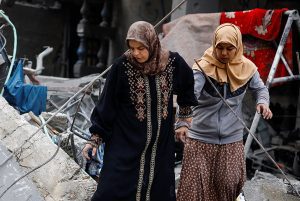
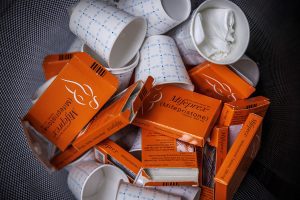
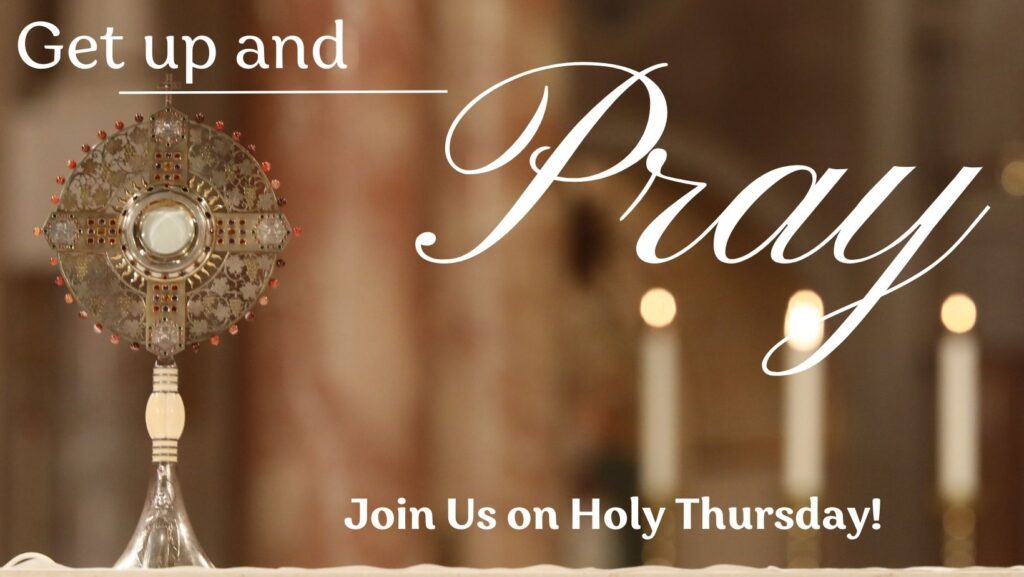 “Why are you sleeping?” he asked them.
“Why are you sleeping?” he asked them.